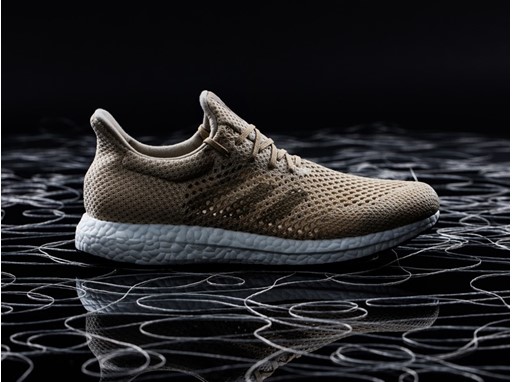Adidas
Adidas tries to reduce the ecological footprint of their products in two ways. On the one hand, there’s the choice of material, and on the other there’s the way the items are manufactured. Adidas has already launched several sustainability initiatives.
- In general, Adidas avoids using plastic, thereby reducing carbon dioxide emissions. The shoe boxes are also 100% recycled.
- In collaboration with Parley, Adidas turns plastic waste into a valuable resource. As of 2016, they effectively use it in their products too, which will help decrease the huge amount of plastic waste in the ocean. In addition, Adidas has stopped offering plastic bags in no less than 2900 of their stores.
- DryDye technology is a polyester fabric dyeing process that requires no water, 50% less chemicals and 50% less energy as compared to traditional dyeing processes. The brand’s introduction of this technology in 2012 was accompanied by the release of a limited collection of 50.000 T-shirts. This number has been growing ever since, and in 2016 Adidas plans to use the technology in their sneaker collections as well.
- Adidas uses the term ‘NoDye’ to refer to materials that retain their natural color. These fabrics have to go through all the stages of the traditional manufacturing process, yet they can skip the dyeing. This means that the overall production process uses less water, less energy and less chemicals. Adidas introduced NoDye in 2014 with the help of items from the Adidas Outdoor, Originals, Running and Training collections, and they have been continually expanding their product offering.
- The Adidas Low Waste initiative produces shoes and sportswear with fewer parts, recycled materials and maximum pattern efficiency, aiming to reduce material waste. They first introduced Low Waste to the market in 2012 with the Element Soul Shoe.
- FORMOTION™ is an independent heel pod that adapts to the wearer's unique footstrike and to any running surface, guaranteeing a smoother running experience. Adidas uses hot runners, thereby reducing material waste with 50% as well as drastically cutting back on the use of glue and reducing CO2 emissions. They work with reusable moulds that can be used for FORMOTION™ as well.
- HomeCourt is a global Adidas store concept that serves as a pilot for their green retail approach. How does it work? A so-called retail box runs all of the store’s operating systems, optimizing heating, ventilation, lighting, shading and door settings, thereby saving up to 50% energy.
-
Adidas Futurecraft Biofabric (quite a mouthful, right?) is a collaboration between the Adidas Group and AMSilk. Adidas is no newbie to the sustainability game, having launched initiatives to reduce its ecological footprint before, both in terms of material selection and production processes. AMSilk, in turn, is the first industrial supplier of synthetic silk biopolymers. A match made in heaven!
The result of this partnership – the Adidas Futurecraft Biofabric – is a sneaker made from Biosteel® fibers. Biosteel® is a replication of natural silk that does not need high production temperatures, thus drastically cutting fossil fuel burning. And as if that was not enough, Biosteel® is biodegradable. If you put your Adidas Futurecraft Biofabric in water and add a certain enzyme, it dissolves completely – well, almost completely: the sole will be the sole (pun intended!) survivor of this natural process.
